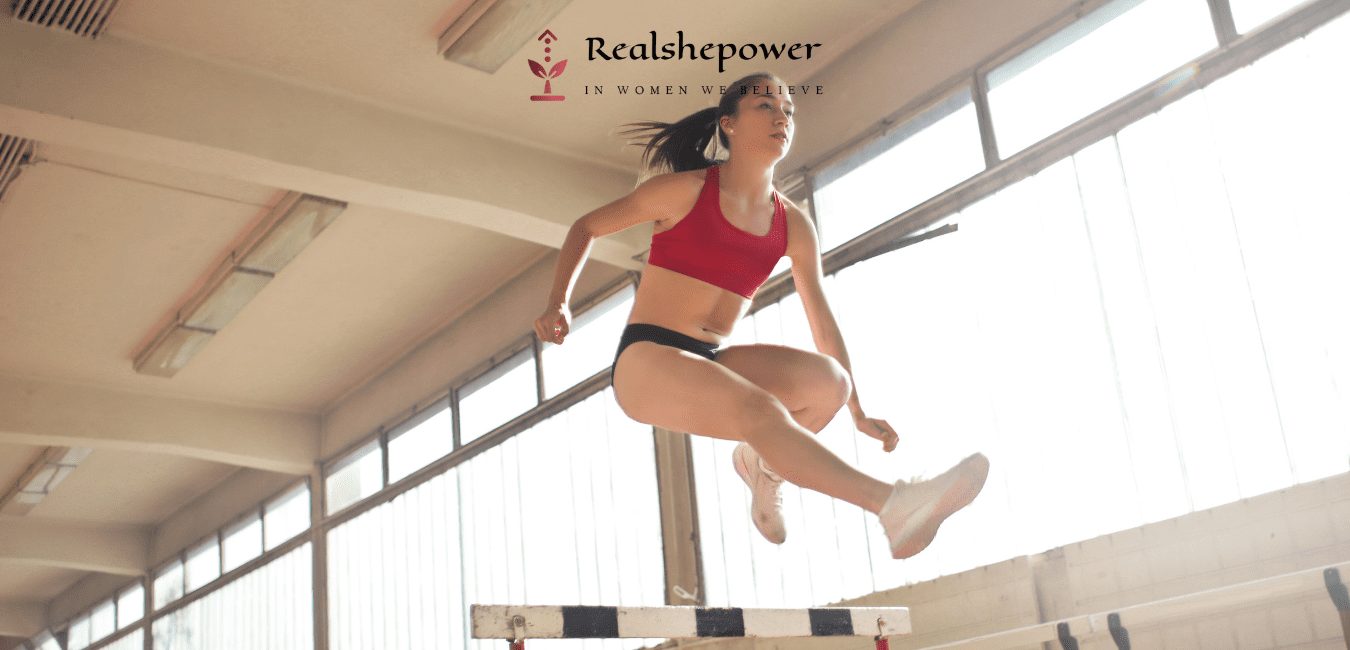Problems faced by Women Athletes in India


Sports play a vital role in maintaining our overall health and well-being. While sports help in maintaining and improving both the physical abilities and skills for the participants, it also works on the entertainment of spectators. Unfortunately, this is the one field where gender inequality is highest. The overall progress rate of Indian women in sports across the nation has been tremendously low. Majorly, it is the socio-psychological barrier that dominates the Indian female participation in sports. This gender gap is responsible for the dismally lower participation of Indian females in sports.
Girls and women in India, due to existing patriarchal dominancy are bound to face a disproportionate number of life challenges. Even today, Indian women are observed as homemaking or child-rearing machines. It is only in some cities where the women have started making their own living. Yet, participation in sports is nothing less than a fairy tale for most of them.
Obligations for a girl starts right from her birth in a family with patriarchal dominance. By virtue of being born in a female’s skin, every girl has to follow the customs and traditions of her family. This limits her abilities to fully express herself and achieve her dreams with flying colours. While fulfilling the demands of her family, she overlooks her personal desires and aspirations.
Further, on attaining puberty, her menstruation cycle starts wherein her body asks for additional iron requirements due to massive iron loss throughout her menstruation phase. Menstruation itself can trigger various other health complications such as nausea, fatigue, depression, pain, etc. Fighting all her physical barriers associated with her menstruation may even challenge her on the emotional front. Even today, society believes that the participation of women in sports may reduce her reproduction ability by directly or indirectly harming her reproductive health.
The social barriers delimiting the participation of women athlete are further triggered after her marriage. Society is not at all concerned with how many medals or glory she brings to her country; what matters is that when does she settles down with her husband. Media pressure on women athletes to ‘settle down’ is nothing new! Furthermore, the media is also ignorant of highlighting the achievements of Indian female athletes. Several types of research worked across the nation has delimited the ability of media sources in representing an encouraging face of the Indian sports for women empowerment.
For most of the time, such constant abuses lead to low self-esteem and performance imbalances for the Indian women athletes. Sometimes, they may even develop a complete hatred of sports. Abusing women athletes is a commonly observed phenomenon as most of the authoritative position in the sports are occupied by male sportsperson. Right from coaches to managers to promoters to organizers, all are men. Hence, issues related to gender inequalities are common in almost every sport. Also, physical assault or sexual harassment is a common phenomenon observed amongst Indian female athletes. Most of the times, they are objectified on the field rather than being praised for their talent, commitment, and dedication.
To add on further to the list is the gender influenced wage disparity issues which are persistent across every sports field. There are fewer sponsors available for women tournaments, and hence, the prize money deflects down. This lowers their self-esteem and generates a sense of job insecurity amongst female athletes. Although there is a provision for obtaining government job for women under sports quota, those who land upon either of them usually earn low. Besides,
While some are dominated by the male members of their families, others are left behind by their own insecurities and lack of motivation and aspiration. Differently-abled girls show low interest in participating in sports than those who are physically fit and active. The underlying reasons might vary to a great extent such as – inaccessible facilities supporting the physical needs of differently-abled women; coaching staff who lack sufficient knowledge about how to train such differently-abled sports enthusiasts; lack of proficient role models for inspiring, motivating or encouraging such differently-abled girls; etc.
Society is yet to realise the importance of female participation in sports as this is the only physical activity that aids in diversifying aspects for women and helping them to lead healthy and happy life. The socio-psychological constraints faced by Indian women drags her into the deep sea of health complications such as obesity, stress, diabetes, hypertension, hormonal dysfunction, etc. Such social-psychological constraints can be eliminated by organizing various campaigns for encouraging women participation in sports. Both the national and the state government can step ahead in this regard to plan for the upliftment of women contribution in sports and create awareness about the benefits of the entire process.
Written by Radhika Prabhu
